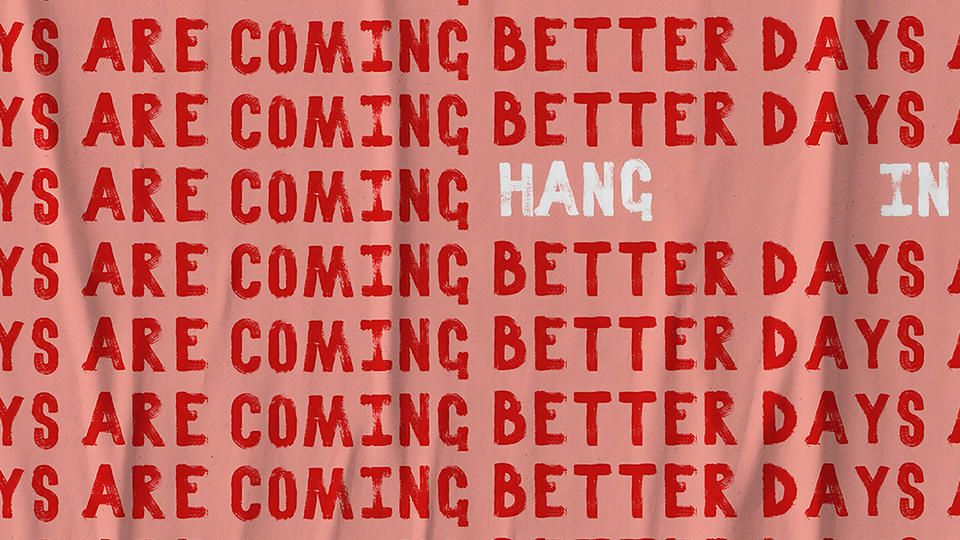
Danger Zone
Why Did Areas That Voted More For The President Worry Less About COVID-19?
Q&A with Professor Yael Hochberg
Why Did Areas That Voted More For The President Worry Less About COVID-19?
The images flowing from Italy’s overburdened hospitals in mid-March and early April seemed to speak for themselves. Yet for weeks, and for some people, they did not. In a newly released study, Rice Business professor Yael Hochberg found that residents of counties with higher shares of Trump voters considered COVID-19 less risky than did residents of other counties — and practiced less social distancing to stop the virus from spreading.
In other words, America’s gaping political divide has affected how we’ve managed risk in the pandemic. The purpose of social distancing, of course, is to reduce the spread of COVID-19. So it matters whether people believe they need to take such precautions, said Hochberg and her coauthor, John Manuel Barrios of the University of Chicago’s Booth School of Business.
Here, Hochberg explains more about her research, how she captured and quantified her data so quickly — and what surprised her most.
RBW: What motivated your study?
YH: It mostly stemmed from conversations my coauthor and I were having about how different segments of society were reacting to the pandemic. We realized we had access to data that could answer some of our questions.
RBW: What data did you have in hand, exactly?
YH: What we had was anonymized data from a location data products company called Unacast, and data on Google search activity that we were using for other projects. We realized we could look at the share of search activity that had to do with the COVID-19 epidemic. And we had access to measures computed from location data from tens of millions of smartphones. You can see, for example, the daily distances people are traveling, and see what kinds of businesses they visit, and you can compare that by date.
So you can take a look at, say, Monday April 6 and compare that with all the Mondays from January to the end of February, before anyone was calling this a major crisis in the U.S. This is what Unacast does. Their data also codes up all the businesses, so you can characterize if they are essential businesses, such as a food store or a pharmacy. Other businesses — nail salons, sporting goods stores, bars, gyms, etc. — are labeled nonessential. And they compute the number of visits to nonessential businesses as compared to the same day of the week before the COVID-19 period.
How much people were searching for a topic is an indicator for how concerned they were about it, and the social distancing behaviors like visits to non-essential businesses are actual decisions that you make in the face of however you perceive the risk.
RBW: What was your main finding?
YH: What we found is that people of different political stripes appeared to perceive the risks of COVID-19 differently and adjust their behavior differently. In counties with the highest share of Trump voters, there were far fewer Google searches for information about the virus, and the social distancing response to coronavirus risk was 40 percent lower than in other counties.
RBW: How did you correlate political beliefs with search and travel habits?
YH: The data we had on search and social distancing was aggregated to the county level. Data from the 2016 election allows you to see the vote share for Donald Trump in a given county. What you see is that in the high Trump vote share areas, the proxies for perception of risk — searches for information about the virus, searches for economic impact, unemployment information — these searches, and thus the perception of risk, are lower. The cell phone data also show less social distancing in those counties in the early days of the pandemic.
RBW: What was your hypothesis?
YH: The hypothesis we had was that these choices were driven partly by political polarization, which results in people arriving at different interpretations of the same facts. There is a lot of research that shows increased polarization in the U.S., and how that plays into things like media consumption, and the fact that people are less likely to believe things that come from the opposing party. So, for example, if Fox News was downplaying the risk as opposed to CNN emphasizing the risk, and conservative politicians and President Trump were not talking about this in the same tone as media more associated with the Democratic Party, that could have an effect on how people who leaned Republican viewed the risks versus those who leaned Democrat.
What you see in the data is that when conservative politicians start to be affected by the virus and Fox media starts to change their tone, and Trump stands up and says this is an emergency, those counties suddenly amp up their social distancing. They start playing catch up, searching online for things more than the blue counties are, traveling less, etc.
RBW: What was the catalyst in changing behavior?
YH: We believe that when authority figures associated with a political party start saying, “This is not a hoax,” that’s when people affiliated with that party start to pay attention. One of the things that was really interesting was that even when the state governments were saying to stay home, counties with higher shares of Trump voters reduced their distances way less than other counties. But when the federal decree came, that’s when these counties changed their behaviors.
A likely channel for this is the media. Until your source of news and the people you consider credible say, “This is real, we should actually be worried,” there may not be a behavioral change. These behaviors change, though, the minute there is news, for example, that Ted Cruz is going into quarantine. There was nothing fundamentally different about medical information at that time, but when it hits a politician you support, and Fox News reports on it, that’s a big factor.
We didn’t have viewership data on Fox versus MSNBC, but we can see the ratio of searches for Fox News versus searches for MSNBC on Google. And where that ratio is higher, the social distancing was less and searches for the virus were less.
RBW: What was your takeaway?
YH: If you have a situation that you, as the policymaker, or governor, or head of state thinks is a serious situation, but that different people in the community are going to view differently because the people they consider authority figures say it’s being exaggerated, if, in that situation, you say, “We recommend you stay at home,” there are going to be people who say, “This is not a big deal.”
If there are people who don’t think the risk is all that high, and they engage in behavior that might expose other people to infection — whether it’s the kid who’s bringing your food through UberEats, the person who went to the pharmacy counter before you, the other person walking a dog in your building — if those people are not taking precautions, you have a problem. In other words, if people don’t have the same perception of risk this can be problematic.
RBW: Was there anything surprising to you about what you found?
YH: When all is said and done, you might think that your health in the face of a disease with a high fatality rate is a nonpartisan issue. The virus strikes where it will. If you tell me people have different outlooks on the economy based on who is in the White House, I wouldn’t be surprised. But you wouldn’t think reaction to a disease would get colored in a partisan way. We have all watched the death count from China and Italy, and you’d think after seeing that people would interpret the facts similarly. And they don’t.
We have no data indicating why political leaders took different attitudes, or whether they under- or over-reacted. But the fact that some people are not viewing the pandemic as seriously as others is pretty clear. All you have to do is look at what has happened in many U.S. cities. People have not stayed home. They don’t stay away from each other in the parks or on trails. People are not all following the “suggestions.” That’s why we concluded in our study that in such cases, the only way to shut that kind of behavior down may be to truly mandate and enforce stay-at-home orders.
Yael Hochberg is the Ralph S. O’Connor Professor in Entrepreneurship – Finance and the Head of Rice University Entrepreneurship Initiative.
Never Miss A Story


